
Juraj Dobrovic
“The dream screen, as I define it, is the surface on which a dream appears to be projected. It is the blank background, present in the dream though not necessarily seen, and the visually perceived action of ordinary manifest dream contents takes place on it or before it. Theoretically it may be part of the latent or the manifest content, but this distinction is academic. The dream screen is not often noted or mentioned by the analytic patient, and in the practical business of dream interpretation, the analyst is not concerned with it.”
Bertram D. Lewin (Sleep, the Mouth and the Dream Screen, 1949)
“Thoughts precede thinking. They need to be thought in order to be recognized as thoughts. They invoke the creation of an apparatus for thinking (the function creates the organ).”
Didier Anzieu (Le Penser, 1994)
“There are no such things as continuities and discontinuities in history, only in historical explanation”
Jonathan Crary (Technique of the Observer)
I know a lot of young filmmakers. After all I taught for six years, five full time, at the Polish National Film School in Lodz, Poland. And I know dozens, literally, of young playwrights. And I have watched the opportunity for work in theatre, for learning and developing, shrink more every year. When I started in theatre you could find a 99 seat house (in LA) and put up a show for five hundred bucks. Maybe less. Nobody made any money but nobody was even thinking about that. This was true in NYC, too, and Chicago and San Francisco et al. This is not true at all anymore. A decent production in LA probably costs around thirty thousand dollars now. Money you are guaranteed to lose.

Signs to ward off the evil eye, 1914, Naples. The fig and the horn.
And I have watched young filmmakers bide their time working as grips, or production assistants (go-fers) and secretaries as they took scripts around and pitched ideas and tried to get someone in power (with money) to option said script. And some of them got low budget films made. Some of these films were good, even. But few people saw them. And the average length of time it took to get to the place where they actually made the film was five years. And for many it took considerably longer. It is a small elite club. Outsiders are let in periodically, and these moments create renewed hope for the struggling masses. But for the most part Hollywood is a closed shop. It belongs the offspring of the rich and influential. The economics and much of the creative, too, is in the hands of Harvard Business school grads. Working class voices are totally, and I mean totally, absent. And often if not usually these aspiring screenwriters are asked to do inordinate amounts of work for free. Free breakdowns, bibles (as they say) beat sheets and then an actual spec draft. All for free. Then the producers and director maybe, will sign off, or not. And if not, that script is largely dead and all those hundreds upon hundreds of hours of work is wasted without any recompense.
The ruling class get to make movies. They get jobs in TV, too. And with a CIA advisor in nearly every story conference and writer’s room in Hollywood, the state has effectively and directly taken over a huge chunk of the culture. Hollywood film and TV is controlled by the children of the rich and very rich. Nobody has any taste, any real education, and most are egregiously ignorant of the world around them, and hence all the more susceptible to influence coming directing from U.S. intelligence agencies and the state department.
Recently Leo DeCaprio, Keanu Reaves, and a dozen other *stars* (not sure Keanu is a star anymore) clamoured to get the opportunity to meet Bibi Netanyahu. Why? Same reason they would fawn over any (ANY) five star general or military killer. The adulation for uniforms and authority is in the open, now. Killers are proud of what they do and the celebrity A-List is intoxicated with this power.
Hollywood is profoundly a study in class.
I will return to ownership of culture more below.
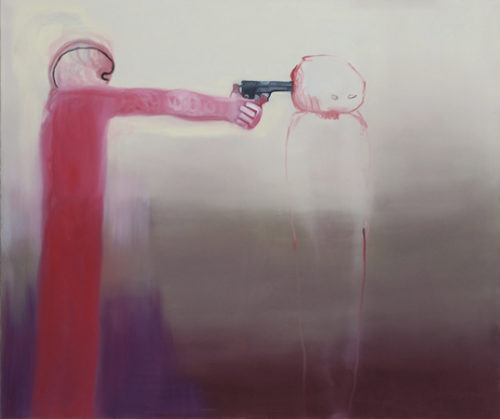
Miriam Cahn
There is a sentence in Jonathan Beller’s book (The Message is Murder) that is nagging at me, or perhaps I should say haunting me.
“Thus it seems to me that something deeply hidden, repressed, or unthought inheres in the dispositif that is photographic technology.”
I want to first give you Foucault’s loose-ish definition of this word *dispositif*.
“What I’m trying to pick out with this term is, firstly, a thoroughly heterogenous ensemble consisting of discourses, institutions, architectural forms, regulatory decisions, laws, administrative measures, scientific statements, philosophical, moral and philanthropic propositions–in short, the said as much as the unsaid. Such are the elements of the apparatus. The apparatus itself is the system of relations that can be established between these elements.
Secondly, what I am trying to identify in this apparatus is precisely the nature of the connection that can exist between these heterogenous elements. Thus, a particular discourse can figure at one time as the programme of an institution, and at another it can function as a means of justifying or masking a practice which itself remains silent, or as a secondary re-interpretation of this practice, opening out for it a new field of rationality.
In short, between these elements, whether discursive or non-discursive, there is a sort of interplay of shifts of position and modifications of function which can also vary very widely.
Thirdly, I understand by the term “apparatus” a sort of–shall we say–formation which has as its major function at a given historical moment that of responding to an urgent need. The apparatus thus has a dominant strategic function. This may have been, for example, the assimilation of a floating population found to be burdensome for an essentially mercantilist economy: there was a strategic imperative acting here as the matrix for an apparatus which gradually undertook the control or subjection of madness, sexual illness and neurosis.”
Michel Foucault (“The Confession of the Flesh” (1977) interview. In Power/Knowledge Selected Interviews and Other Writings (ed Colin Gordon), 1980)
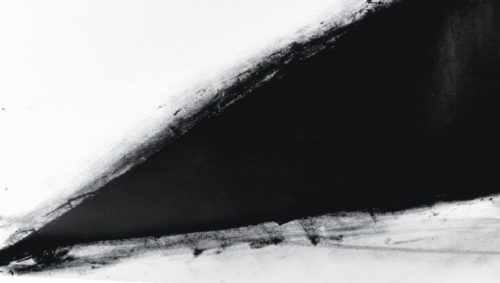
Richard Serra
This hidden and repressed, and unthought (more on that notion later) *something* that inheres in image (or for Beller, photography per se), lets say, or even more broadly, that is part of a dispositif in all that can be called the appartus of society, is pathogenic. That which is taken for granted, and therefore considered real, and which then sort of functions as a backdrop — though really its more like a basso ostinato in that it helps shape the harmonic form of the overall piece. In any event, I would say in contemporary culture the ‘taken for granted’ has grown into a massive amorphous mentally gelatinous form of stupid. But more to the point, what inheres is that which engenders disease, or disequilibrium mentally.
“In choosing as the goals of Modernity an intellectual and practical agenda that set aside the tolerant,skeptical attitude of the 16th-century humanists,and focussed on the 17th-century pursuit of mathematical exactitude and logical rigor,intellectual certainty, and moral purity,Europe set itself on a cultural and political road that has led both to its most striking technical successes and to its deepest human failures.”
Stephen Toulmin (Cosmopolis, the Hidden Agenda of Modernity)
There is another aspect cutting across the unthought today and that is a strange almost nihilistic anti human quality in culture. You see it linked with some of the overpopulation alarmists – which figures given the eugenics legacy at work. Hollywood is now deeply entrenched with U.S. intelligence, to the point where the writer and creator of Game of Thrones is Stephen Friedman…see his background here. https://en.m.wikipedia.org/wiki/Stephen_Friedman_(PFIAB)
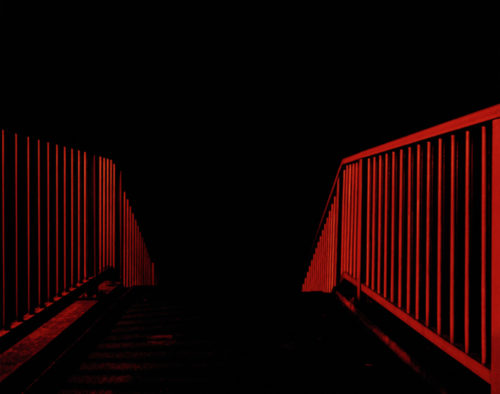
Edgar Martins, photography.
House of Cards was created by a former Clinton intern and the list goes on. The Americans was another show with an intelligence and security background. And another new show The Code features early in its first season a choice made a mother, a Marine colonel, to sacrifice her only son because of some abstract duty to the Corps. And this is presented as noble and honorable. And not even that big of a deal, actually. The liberal educated bourgeoisie seem ever less conscious of their own projections. And in the first order of repression is their fear of the ruling class. As a friend said, ‘they know Abu Ghraib’ waits for them if things go sideways. Most Hollywood television feels like recruitment films for the military. The Last Ship was nakedly a navel recruitment franchise. SWAT is the same for domestic police. But even in buddy dramadies like Lethal Weapon (one of the many rehashes of successful films) there is a clear message to worship authority, respect the uniform and don’t make waves. Literally the term “dissident” is now synonymous with criminal (unless the character is a dissident from Russia, Cuba, Iran, Syria, North Korea, or China– in which case the term is one synonymous with heroism).
The culture is no longer an actual living organic thing. There really is no culture. Good artists exist, but they are marginalized to a large degree. And the audience for good work is microscopic. And as in the show with a mother putting Marine Corps pride and *duty* ahead of her son, there is a chilling sense of sadism shadowing the entire society. And so, this unthought sense of something, an ineffable and mysterious quality that is infused with nearly all activities, has gradually grown in importance. And today this quality that inheres is one tied intimately with aggression and violence. Gabor Mate had an interesting interview with Aaron Mate, his son, about Russiagate (sic). The sense that Americans in general want victimhood, and in the interview Mate (one of them) chose some very cogent clips from mainstream media. The desire for a sense of weakness, of vulnerability, and it runs alongside an exaggerated belief in American exceptionalism. The more Americans applaud violence the more they must erect a model of themselves as victims. And speaking of victimhood, the now fully fascist government of Poland (PiS Party, or Law and Justice) has taken on the rewriting of history, always with an eye to painting Poles as international victims

Mel Ramos, 1971.
“One Sunday in October 2017, a crowd gathered outside Our Lady, Queen of Polish Martyrs church, in the eastern Warsaw neighbourhood of Grochów. They were there to see the unveiling of a commemorative plaque: ‘In Memory of the 200,000 Poles Murdered in Warsaw in the German Death Camp KL Warschau.’ Flanked by two soldiers, the plaque was sprinkled with holy water by a priest and then saluted by an army officer, who laid a wreath. The crowd sang the national anthem. In a country littered with memorials to its own suffering, where public life is punctuated by commemorations of the fallen, the ceremony would have been unremarkable were it not for the fact that there is absolutely no evidence that two hundred thousand Poles were murdered in KL Warschau. { } The worst thing about being in that tunnel was not that the people around me believed that so many of their compatriots were gassed there. It was that they so desperately wanted it to be true.”
Christian Davies (London Review of Books, April 2019)
https://www.youtube.com/watch?v=uR07OtEhKPE
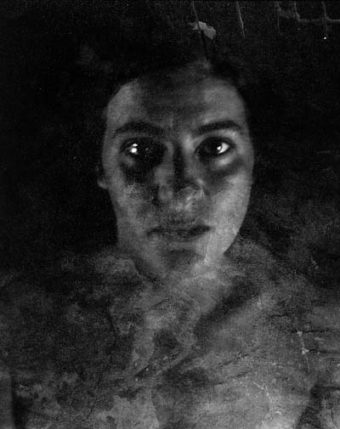
Harry Thuillier, photography.

S. H. Raza
This is all a general sort of description of the U.S. (and much of Europe, too). And I think there are deeper questions that are much more difficult to identify. When Beller calls this quality *unthought* he touches on something critical. For what is meant by that statement? It is a statement that validates, on least partly, the idea of an unconscious. And what inheres, what indelibly resides in our relationship with society, is not a *thing*, but a social relation. But what do we mean by society in that sentence? And I think one answer begins with how there is always an alibi in the contemporary white Western mind. And I add white because I have been seeing how deeply race and even just the trace effects of racism, inhere in Americans. (I have not yet read a black believer in overpopulation as a curious example, perhaps). The white westerner of today cleaves from an abstract and mythic ideal of self toward anti black racism and antisemitism. This is a psychic fault line along which America always operates.
The unthought exists within a grand bourgeois reality that itself frays at the edges. The bourgeoisie are today running in dread. From what?
“Too often it has been overlooked that the basic content that determines a formal quality may be an infantile one.”
Bertram D. Lewis (The Psychoanalysis of Elation, 1950)
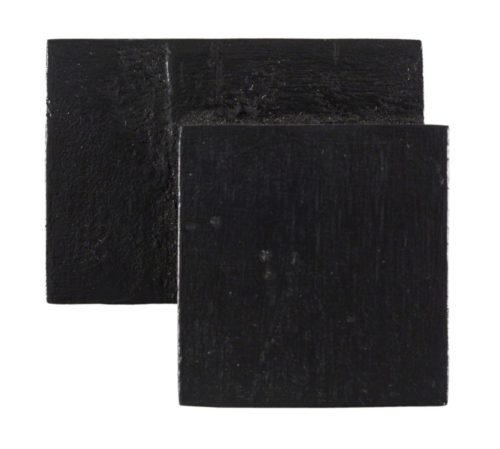
Radomir Damnjonoviæ
“Every micro-moment or “cell” of experience is made of distinction–union tendencies.{ } What would it mean to posit them as indistinguishable and unobservable? Would this mean they are beyond knowing? I suspect there are vast ‘domains’ we do not, and possibly cannot, know, yet they work and influence us, even structure us. Bion’s nameless, wordless Transformations in O point to this, as do countless wordless Buddha-lands beyond conscious categories pointed to in many sutras.”
Michael Eigen (Contact with the Depths, 2011)
In 1949 Bertram Lewin wrote a paper where he introduced the idea of what he called a dream screen. The blank black background to dreaming. It was focused primarily on infants, but later Michael Eigen and others (Didier Anzieu and his skin ego is an extension of this) have returned and reconsidered what Lewin had prophetically discovered. For Lewin, the screen was a representation of latent idea, a breast. The baby eats, is satisfied, sleeps. The peaceful sleep of fullness slips into blank background support for dreams, for other dreams. Or as Eigen puts it…“fullness = nothingness = everythingness”. Psychoanalysis posits absence (no mother) or frustration (no mother) as the road to symbolization. A symbol is created to fill in for the missing mother. Instead of the literal mother, the material mother, there is a symbolic mother.

Fred Eversley
David Rosen wrote, at the start of a recent article; “The American suicide rate is at a 50-year high. In 2017, 44,193 committed suicide in the U.S. and 1,652 killed themselves in New York State. In 2016, the City’s Health Department reported that 525 people committed suicide.”

Miyako Ishiuchi, photography.
Didier Anzieu goes into some depth discussing the idea of a primary aloneness. (although as someone pointed out for Anzieu, who was to do a study, a psychoanalytic study of Beckett, there is always one overseer, observing)..
“Bertram Lewin refers to the “blank screen” (1946) of dreams: the dream is reduced to its container, it has not yet acquired a content. Lewin sees this as standing for the breast emptied by feeding, a flattened-out surface that forms the backcloth on which the future action of real nocturnal dreams will later be projected:…( ) Falling asleep calls into question the psychical framework of the waking state, the three-dimensional body schema with its internal symmetry, the familiar body image. The tactile and visual images we produce while we fall asleep are not organised in relation to each other but arise in series. The main themes are: the flattening out of the body, reduced from a volume to a plane; the uncertainty of bodily limits (swollen or shrunk); the distortion of faces, grinning or threatening (i.e., representations of the imago in its raw state); ( ) sensations of uncanniness in general.”
Didier Anzieu (The Skin Ego)
The blank screen is now both a projection, a metaphor, and a material reality in daily life. Screen addiction is severe now, especially among the young. The flattened breast, the frustration of the empty mother, the absent provider of nourishment and pleasure –is the screen, which is boundless black background is also highly activated, even if not quite thought. Symbol and something more. I should add here that Didier Anzieu’s work, but especially his major work The Skin Ego, is published in English with a welcome new translation by Naomi Segal. And it is likely among the very most significant books on human psychology ever written.

Michelangelo (Atlas slave, Galleria-dell’Accademia)
“We forget that we must subjectively “format” the data of our observations with a priori categorizations (Kant, 1787). Just as a film emulsion catches the rays of light and transforms them into corresponding photographic images, so the images we form and internalize are modified by the subjective emulsions of our internal world, which render these data into personalized subjective experiences prior to their ultimate objectification.”
James Grotstein (Who is the Dreamer who Dreams the Dream)

James Bateman (1928)
Grotstein noted that he tried in his clinical practice to listen to the analysand as if what was being said was text. A depersonalised text in a sense. This is something I think writers do — at least theatre writers. Its not what you think you are saying, but rather, if you step back, what is actually said. For it usually if not always more than you thought. But to return this to Anzieu, and to the idea of this cultic addictive contemporary surrender to a narrative of life that is pre-scripted by those (the ruling class, essentially) who control the mass electronic apparatus’ of communication and entertainment. And there is another aspect here, as a slight side bar, having to do with a cyclopean singlminded vision (or attention) that tends toward a rigid demonizing of what is seen, the object of attention, and its inherent threat level. The myth of the evil eye (both Muslim and Hebraic) depicts the single eye as inflexible and demonic while stereoscopic sight is perceived as the solution, the tolerant gaze.
In infants the formation of an inside and an outside begins with the breast. Introjection or feeding, and projection, or excreting, become points for creation of boundaries.
“…the infant’s introjection of the mother-baby relation as a container-contained relation and the resulting formation of an “emotional space” and a “space for thought”—the earliest thought, that of the absence of the breast, makes the frustration of that absence bearable—leading to an apparatus for thinking thoughts (Bion, 1962); alternative representations of a soft, flaccid amoeba-Ego and a hard crustacean-Ego in the two forms of childhood autism, abnormal primary and encapsulated secondary (Tustin, 1972); the second, muscular skin as a defensive-offensive armour in schizophrenics (Bick, 1968); the formation of three psychical borders, one with the internal space of external objects, one with the internal space of internal objects, and one with the outside world, but which leave a “black hole” (analogous to that of astrophysics) that swallows up any psychical element that comes near—madness, autistic whirlwind (Meltzer, 1975).”
Didier Anzieu (ibid)
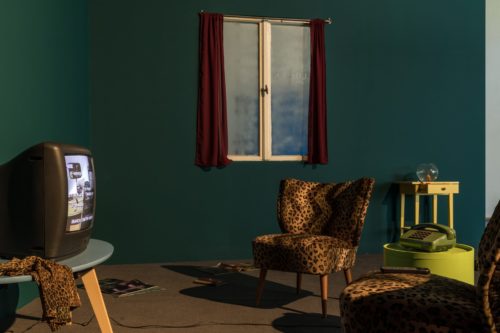
Lynne Hershman Leeson, photography, installation.
It is important I think to contemplate the earliest processes for imagining space. Psychic space is metaphor. Bion saw any insecurity about the integrity of the *container* , the skin, in its contact with the mother, as a source of later depersonalization and anxiety. A crippling anxiety and often experienced as a feeling of being drained. But, as Anzieu notes “Every figure presupposes a ground against which it appears.” The ground, whether flattened breast or some proto experience of boundlessness, is now outside, and is from very early in the infant’s life, an item of importance. If the parent watches the screen and not the infant, the screen *inside* is altered — there is damage to the security of the container. And this is additionally how the infant finds a *space* for thought.
And this is where Beller is, again, important. The technology of the camera, photography, and Capital and slavery. The photograph is both literally and metaphorically raced.
Beller quotes Jonathan Crary…(Technique of the Observer).
“‘the optical devices used in the nineteenth century were not invented in cultural vacuums,” but were, rather, “[p]remised on ‘conceptual structures’ that reflect ‘points of intersections where philosophical, scientific, and aesthetic discourses overlap with mechanical techniques, institutional requirements, and socio-economic forces.’ [P]hotographic equipment also presupposes an ideal viewer—an observing subject—whose cultural privileges can be inferred from (and, consequently conferred by) the ways in which a camera makes the world visible to human perception.”
Jonathan Beller (The Message is Murder)
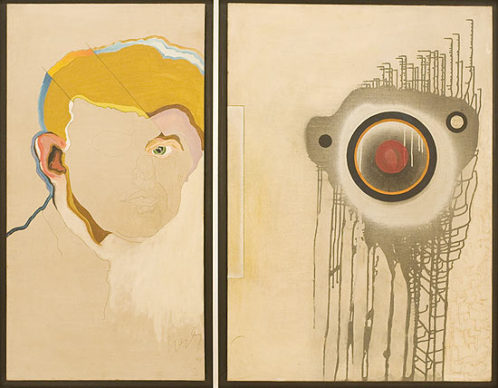
Wesley Duke Lee
The photograph confirmed racial bias. Its development echoed capitalist hierarchies embedded in the gaze. In sight.
Today the screen is more acutely than ever tied into the psychic formation and development of the child. The interior ground is untrustworthy, and the exterior screen confirms this. That we are several generations into screen privilege, or screen domination, today’s adult population exhibits symptoms of repetition compulsion, acute anxiety, and a weakened ego that takes shelter in group think. And western Capital has today penetrated further into all matters of culture, and really of society in all respects, than ever before. The screen is commodified at its inception.
Beller observes “that what is encoded in the basic structure of the photographic apparatus feeds back into the social to re-organize and reproduce it…” Western modernity is then abstracting racial thinking that we can claim for the purposes here began with colonialism (and the invention of these new optical technologies). But the photographic image, the flattened screen image also encodes capital. And hence also encodes class. One aside here is that the many debates that have arisen again regarding overpopulation are nearly obsessive, and take on very distinct (to borrow from Murray Bookchin) theistic quality — a moral code is being articulated, and class is totally absent. The concern for (alleged concern) for the planet seems never to delve into the class structure of the *too many*. But this aside has relevance here, as does a celebrity culture ever more enamoured of the technicians of violence. And as western global violence increases there is an accompanying shrillness given to expressions of love and concern for the planet. The planet is discussed in terms of kitsch anthropomorphism. The tension is, then, one between this mutilated and weakened individual ego, and its attraction to aggression, and the performance of an ideal character whose love is global and planetary.
Anzieu posits a skin ego, and I need to quote him here…
“By “Skin-ego” I am referring to a mental image used by the child’s Ego during its early stages of development to represent itself as an Ego containing psychical contents, based on its experience of the surface of the body. This corresponds to the moment when the psychical Ego differentiates itself from the bodily Ego in operative terms but remains mixed up with it in figurative terms. Viktor Tausk (1919) shows particularly well that the syndrome of the “influencing machine” could only be properly understood through the distinction between these two Egos:the psychical Ego continues to be recognised by the subject as his or her own (it is this Ego that implements defence mechanisms against the dangerous sexual drives and interprets logically any perceptible data that reach it) whilst the bodily Ego is not recognised as belonging to the self and the cutaneous or sexual sensations that emanate from it are attributed to the “influencing machine” controlled by the machinations of a seducer-persecutor.”
Didier Anzieu (ibid)
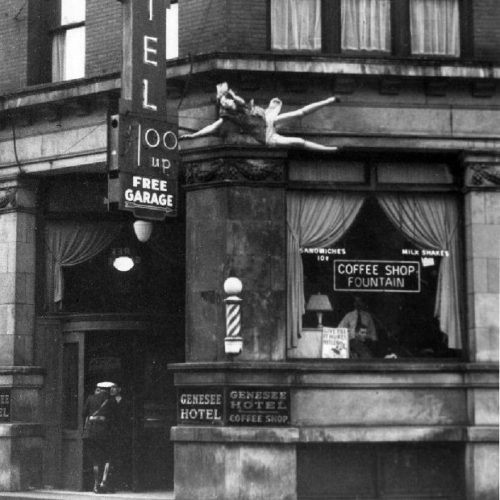
Russel Sorgi, photography (The Genessee Hotel suicide, 1942, Buffalo NY)
Now, consider the later fetishized attachements to substitute skins. Anzieu mentions Sacher-Masoch’s Venus in Furs (1870), but there are countless others. The soft velvety and scented fur is there to be luxuriated in while a forgetting of the killing and skinning of the original animal. Consider the massive American slaughter of the bison, as just one example. Trophy hunting and the mounting of animal heads on the wall. Gratuitous killing, often taking place on screens (the now infamous Assange video of collateral murder by U.S. Marines) and executed by screen technicians. The uniform itself has its own relationship with skin and wrapping. Francis Tustin has written much about autism and ideas of wrapping and skin. That the new poster child for environmentalism (corporate highjacked and marketed) Greta Thunberg is an Aspergers autistic seems not arbitrary. Such things are all too perfect when casting — for the new Jesus will most certainly be autistic.
“Sylvie Consoli has presented the case of a masochistic patient who gets pleasure from imagining himself humiliated by a woman under the following circumstances: she is standing dressed in the skin of a sheep or cow while he, on all fours at her feet, identifies as that sheep or cow. This scenario represents a skin common to the man (in the formof the animal) and to the woman who is dominating him, wearing the skin of the same animal, and this complementarity of roles strengthens the illusion of a narcissistic continuity. Body to body, each of them is not so much an “extension” of the other, as Consoli argues, but rather one of the two sides of the common cutaneous interface I have just described. It is worth adding that in many perverse scenarios, as well as in ordinary erotic fantasies, fur often plays a fetishistic role based on its resemblance to the body hair that conceals the genital organs and thus the difference between the sexes.”
Didier Anzieu (ibid)

Sugiura Kunie (Emulsion on paper, acrylic on canvas).
Following the opening quote of Beller’s, at the top of this posting, comes this….“A thoroughgoing analysis of this dispositif would necessarily show connections between photography, racism, and political economy—three vectors of objectification—and ultimately should intersect with legal, psychoanalytic, imperialist, and sex-gender systems. “
The psychoanalytical aspect here is related to the dream screen. Lewin’s screen was written in the late 1940s, and today, obviously, there is also something Anzieu touches on when he references Viktor Tausk’s 1933 article On the Origin of the ‘Influencing Machine’ in Schizophrenia.
“The schizophrenic influencing machine is a machine of mystical nature. The patients are able to give only vague hints of its construction. It consists of boxes, cranks, levers, wheels, buttons, wires, batteries, and the like. Patients endeavor to discover the construction of the apparatus by means of their technical knowledge, and it appears that with the progressive popularization of the sciences, all the forces known to technology are utilized to explain the functioning of the apparatus. All the discoveries of mankind, however, are regarded as inadequate to explain the marvelous powers of this machine, by which the patients feel themselves persecuted.”
Viktor Tausk (ibid)
Jerry Mander, who wrote the rather neglected and still remarkable Four Arguments for the Elimination of Television (1978) mentions the ‘influencing machine’ and notes it sounds a lot like television. The smart phones of today are clearly the more perfect example.

Titian (Venus with a Mirror, 1555) detail.
So, there are two threads here; one is the ineffable and quasi mystical quality of the unconscious. That mysticism does not preclude a rigorous class analysis however. This ties back into Beller. And the second thread is that of the screen. And they are, obviously, related. For what is unthought and repressed, is also likely traceable to infantile development. But our infantile development does not occur in an historical vacuum.
“…the ancient Jewish custom of choosing a “scapegoat” or ram to sacrifice. One particular aspect of this custom is of note: the members of the congregation, in effect, projected (attributed) their sins to the goat or lamb, which was then taken into the wilderness and allowed to be preyed upon by predators. Psychoanalytically, one can posit that insofar as Christ, the Pascal Lamb, can transform and therefore transcend the projective identifications, he becomes sacred. Insofar as he may be transformed by the projections, however, and therefore fail to transcend them, he has become the devil, who thereupon demands redemption by his relentless “return of the repressed.”
James Grotstein (ibid)
Also, the nature of early screens always involved a process of projection. Today screens are lit from within. There are several ways to look at this. If the screen is now an exterior version of an inner dream screen, the light from within implies an intimate relationship with the image on the screen. The metaphor of projection becomes a metaphor of introjection. Or, the viewer is feeding off the image.

Angus Fraser, photography.
“The imprisonment, social death and annihilation of subjects by the logistics of the gaze are fundamental to that relation we name photography. This photo-graphing of the skin, we must insist, is an ineluctable part of what Flusser identifies as the camera’s program. To produce photography as a stand-alone platform, slavery must be at once present and disavowed. Which is to say that slavery is one of the methods by and through which photography came to be what it is, or at least what it appears to be—an autonomous platform. From this it is crystal clear that colonialism, and slavery, and the institutionalization and normalization of the practices on which these depended and depend, are part of the conditions by which bodies are first liquidated of subjectivity and reduced to images and signs for others to read.”
Jonathan Beller (The Message is Murder)
The skin, which in early photography was always in black and white. So the logical and the certain; which came out of the 17th century turn away from the humanists a century before, is the cyclopean vision of absolutes and proof. This is now deformed into a cultic worship of anonymous numbers and calculation. All technology is viewed as correct and when its proven to be deeply flawed (facial recognition for example) it is still right. The culture reproduces the lie. In fact it compulsively repeats the lie. The cyclopes vision is one that demonizes, it is the vision of superficiality. And the *new* screen is one which emanates from within, the post modern influencing machine. And it is quietly theistic, as well. The glow is kitsch mystical. The viewer is bathed in his own light in a sense.
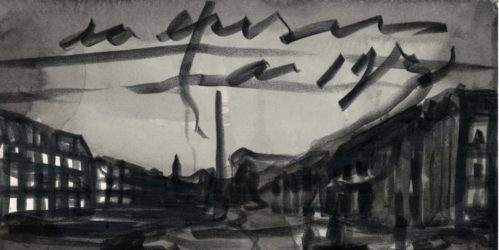
Marcel van Eeden
Back lit LED devices, employing *blue light* also tend to disrupt circadian rhythm and deep sleep patterns. The intensity of blue light (which has very short wave length but high energy) is known to cause headaches and eye fatigue. I personally cannot spend too much time under fluorescent ceiling lights. I get enormously tired and irritable. That nearly all institutional buildings use fluorescent lighting is worth pondering. But the back lit screen of portable devices suggests something magical.
The contemporary westerner is intwined in a dialectical gaze that both imitates the camera, scans image, and retreats to cyclopean mono dimensionality . The surveillance camera, the CTTV eye is a primary source of subjectivity today, at one level. Anonymity is both manufactured and disavowed. The denial is the residue of an individualism that is fast receding into myth.
“Attention to the ego does not demand blindness toward the instinctual and social dimensions that constrict and choke the ego.”
Russell Jacoby (Social Amnesia)
The skin is then sedimented as metaphor, and carries its historical resonance at all times. The severe autistic often will point, for example, using the arm or hand of someone else.
“On the other hand, a dream is an impressionable film: it registers mental images which are for the most part visual, occasionally with added sound or subtitles, sometimes more like photographic stills, but most often animated like cinematic films, or rather—to use a better, contemporary comparison—like a video-clip. This is certainly the activation of one of the Skin-ego’s functions—that of the sensitive surface which registers traces and inscriptions. Or if not the Skin-ego, then at least one can say that the image of the dematerialised, flattened-out body provides the dream backcloth on which projected figures appear, symbolising or personifying psychical forces or agencies in conflict with one another. The film may be of poor quality, the reel may get stuck or let in light, making the dream ( ) In order for a dream to occur there must be a Skin-ego (babies and psychotics do not dream, strictly speaking, for they have not acquired a secure sense of the difference between sleep and waking life or between reality and hallucination). Conversely, one of the functions of dreaming is to repair the Skin-ego, not only because it runs the risk of coming undone during sleep but above all because it has been, to one degree or another, riddled with holes by incursions from the day before. In my opinion, this vital function of the dream, restoring the psychical wrapping day by day, explains why everyone—or more or less everyone—dreams every night, or more or less every night.”
Didier Anzieu (ibid)

Michael Grieve, photography.
Whatever the implications of our relationship with various technologies, it is clear, I think, that capital and class are encoded throughout and that the logic of instrumental reason has become the logic of our unconscious. Like it or not. Aesthetic resistance is one way to break the endless loops of compulsion and the deadening of thought and feeling.
To donate to this blog you can use the paypal button at the top of the page. It is greatly appreciated. And thanks to those who already have.

Leo starred in The Revenant, produced by Hollywood mogul Arnon Milchan who was involved in the Netanyahu bribery scandal. He gave the Israeli prime minister “gifts worth at least a million shekels ($283,000; £204,000) .” The gifts were given in exchange for help getting Mr Milchan a US visa. It’s a big circle jerk.
I looked at the wikipedia page and it looks like its his son who has involvement with game of thrones! Pt of rich offspring handling these things still stands tho
“Hollywood is now deeply entrenched with U.S. intelligence, to the point where the writer and creator of Game of Thrones is Stephen Friedman…see his background here.”
He is _the father of_ the creator of Game of Thrones. Slightly different…
yes people keep pointing that out. I guess its slightly different./